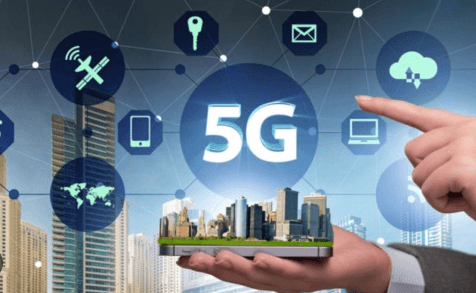Introduction
In the last decade, mobile connectivity has transformed our lives—streaming, smart devices, real-time gaming, augmented reality, and remote work all hinge on fast, reliable wireless networks. The shift from 4G to 5G is more than just a speed upgrade; it’s a leap in network design, architecture, and capability. But many users still wonder: how does 5G work?
In this article, we’ll break down the inner mechanics of 5G—its radio access, architecture, key enabling technologies, and real-world benefits—while keeping the explanation user-friendly. We also draw from expert sources and current standards to ensure accuracy and trustworthiness (EEAT: expertise, experience, authority, trust). Along the the way, we’ll use relevant LSI (latent semantic indexing) keywords—like “5G network slicing,” “low latency,” “massive MIMO,” “edge computing,” and “millimeter wave”—to help you get a full picture.
By the end, you’ll understand how 5G works under the hood, why it outperforms 4G, and where it’s headed next. Let’s dive in.
1. What Is 5G and Why It Matters
5G is the fifth generation of mobile wireless technology, standardized by the 3GPP as 5G NR (New Radio). It builds upon the foundations of previous generations but adds new capabilities:
- Significantly higher data rates (peaks in the multi-gigabit per second range)
- Much lower latency (delays)
- Greater device density (supporting more connected things per area)
- Better reliability, flexibility, and network intelligence (via virtualization, slicing, edge computing)
Why does that matter? Because future applications like autonomous vehicles, remote surgery, massive IoT deployments, augmented and virtual reality, smart factories, and mission-critical services all demand not just raw speed but consistent performance, ultra-low latency, and flexibility.
2. The Basic Principle: Cells, Base Stations, and Radio Waves
At its core, 5G works much like previous cellular networks:
- The service area is divided into cells. Each cell is served by a base station (or radio access node).
- Your device (smartphone, tablet, IoT sensor) communicates wirelessly via radio waves with the nearest base station.
- The base stations are connected via backhaul (wired fiber, microwave links, etc.) into the core network and eventually to the internet.
Where 5G differs is in how it uses radio frequencies, how it organizes its architecture, and the technologies it layers on top.
3. Spectrum and Frequency Bands: Low, Mid, High (mmWave)
One of the major changes with 5G is the use of a broader range of radio frequency bands:
- Low-band (sub-1 GHz): Offers broad coverage and better building penetration, but relatively modest speeds.
- Mid-band (1 GHz to ~6 GHz): A good balance of speed and coverage; much of current 5G deployment uses mid-band spectrum.
- High-band / millimeter wave (mmWave, ~24 GHz to 40 GHz or even higher): Very high capacity, ultra-fast speeds, but short range and susceptible to attenuation by obstacles (trees, walls, rain).
Because mmWave signals degrade quickly, 5G needs many small cells (compact base stations closer together) to provide consistent coverage in high-frequency bands.
One reference also notes that 5G uses different spectrum “airwaves” and adapts encoding to use more usable frequencies.
Thus, by combining low, mid, and high bands, 5G achieves both coverage and ultra-high throughput.
4. Key Enabling Technologies
To make 5G work at scale and with high performance, several advanced technologies are essential. Let’s explore the major ones:
a) 5G NR and OFDM Modulation
5G’s air interface—5G NR (New Radio)—is the radio access technology that governs how devices talk with base stations. It uses OFDM (Orthogonal Frequency Division Multiplexing), a modulation scheme that splits data into multiple narrow subcarriers. This allows for flexible spectrum use, better interference management, and lower latency.
Because OFDM is more flexible than older schemes, it adapts better to varying channel conditions and supports dynamic bandwidth allocation.
b) Massive MIMO & Beamforming
MIMO stands for Multiple Input, Multiple Output. In 5G, massive MIMO systems use tens or even hundreds of antenna elements at a base station to transmit and receive signals.
Coupled with beamforming, the network can focus radio signals directly toward each user (rather than broadcasting everywhere). This improves signal strength, reduces interference, and increases capacity.
c) Network Slicing & Virtualization (SDN / NFV)
5G is more software-driven than previous generations. It uses software-defined networking (SDN) and network functions virtualization (NFV) to decouple hardware from network functions, enabling flexibility and scalability.
Network slicing is a powerful concept: you can carve multiple virtual networks on the same physical infrastructure, each optimized for a specific use case (e.g., low latency for gaming, high bandwidth for video, ultra-reliable for industrial control).
This allows operators and enterprises to tailor network behavior for particular devices or applications, improving efficiency.
d) Edge Computing & MEC (Multi-access Edge Computing)
Instead of routing all data and intelligence to distant core networks, 5G often processes data closer to the user in edge servers (MEC). This reduces latency, relieves core congestion, and enables quicker responsiveness for time-sensitive applications (e.g. AR/VR, autonomous vehicles).
This local processing is essential to realize the ultra-low latency targets of 5G (often around 1 millisecond or less)
e) Standalone vs. Non-Standalone 5G (SA vs NSA)
- NSA (Non-Standalone) 5G uses existing 4G LTE infrastructure as the anchor while adding 5G radio components. It’s easier for early rollout.
- SA (Standalone) 5G uses a new 5G core and doesn’t rely on 4G components. It can fully deliver all 5G capabilities (network slicing, ultra-low latency, etc.).
For many advanced 5G features, SA deployment is essential. NetworkComputing+1
5. How Data Moves: From Device to Core and Back
To see how 5G works in practice, let’s walk through a simplified data path:
- Your device sends a request (e.g. video download) via radio waves to the nearest 5G base station (gNB).
- The base station processes and forwards the data (or parts of it) possibly through edge computing nodes (to reduce latency) or routing back to a central core.
- The core network (service-based architecture in 5G) handles authentication, routing, and passage to the internet or to other network functions.
- The response is sent back through the chain: core → base station → your device, optimized dynamically (beamforming, slicing, etc.).
This is all managed via software-driven network elements, virtualization, and flexible orchestration to adapt to traffic demands and ensure performance.
6. Performance: Speed, Latency, Efficiency
What improvements does all this deliver?
- Speed: Theoretical peak rates in 5G can go up to ~20 Gbps (or more in advanced versions)
- Latency: 5G aims for sub-1 millisecond round-trip latency in optimal conditions
- Capacity & density: Many more devices (IoT, sensors, etc.) can be supported within the same area.
- Energy & efficiency: 5G is designed to be more energy-efficient per bit of data transmitted than prior generations.
With better performance and flexibility, 5G enables use cases that weren’t feasible with 4G.
7. Use Cases: Where 5G Makes a Difference
Because 5G enables ultra-low latency, high bandwidth, and massive connectivity, it supports advanced applications:
- Autonomous vehicles: fast, reliable communication with infrastructure, other vehicles, and edge servers.
- Remote surgery / telemedicine: near-instant feedback and high reliability in medical contexts.
- Industrial IoT / smart factories: real-time control, robotics, precise synchronization.
- Augmented & Virtual Reality (AR/VR): immersive experiences, low motion sickness due to minimal delay.
- Smart cities & infrastructure: connected sensors, traffic management, environmental monitoring.
- Massive IoT: agriculture, utilities, environmental sensing, where many low-power sensors must coexist.
These use cases rely not just on speed, but on consistent performance, low latency, and network intelligence.
8. The Road Ahead: 5G-Advanced and Beyond
5G is still evolving. The next milestone is 5G-Advanced (3GPP Release 18+), sometimes called 5.5G — a bridge toward 6G.
Key enhancements in 5G-Advanced include:
- Improved uplink throughput, better multi-antenna designs, AI/ML optimization in the network, efficient power usage, and support for new use cases.
- Integrated sensing and communications (ISAC): combining wireless communication with radar-like sensing.
- Better coverage in non-terrestrial networks (satellites, drones) to support remote areas.
- Extended support for new devices, such as low-power IoT modules with reduced complexity (RedCap).
As 5G-Advanced evolves, we get closer to 6G, expected around 2030, with new frequency bands, terahertz communication, and pervasive intelligence.
Thus, when you ask “how does 5G work,” it’s useful to also see it as a stepping stone in an evolving wireless ecosystem.
Conclusion
5G is not just a faster version of 4G—it represents a transformation in how wireless networks are designed, deployed, and operated. At its core, 5G works by combining advanced radio techniques (like OFDM and massive MIMO), diverse frequency bands (low, mid, mmWave), intelligent network slicing, virtualization, and edge computing. The result is a network capable of ultra-low latency, high throughput, and massive device connectivity. These capabilities unlock innovations across industries—from autonomous vehicles and remote surgery to smart factories and immersive AR/VR. And with the ongoing evolution toward 5G-Advanced and 6G, wireless communication is entering an era of flexibility, intelligence, and ubiquitous connectivity. By understanding how 5G works under the hood, you appreciate the engineering leaps that make tomorrow’s digital experiences possible—and can better evaluate what to expect as this technology continues to mature.
FAQs (People Also Ask)
1. How does 5G differ from 4G LTE?
5G introduces new spectrum bands (especially mmWave), uses 5G NR with more efficient modulation, adopts massive MIMO and beamforming, supports network slicing, and leverages edge computing. Together, these changes deliver much higher speeds, lower latency, and greater flexibility than 4G LTE.
2. What is network slicing in 5G?
Network slicing is the technique of partitioning a physical network into multiple virtual networks (slices), each tailored for specific requirements (e.g. ultra-reliable, low latency, high throughput). Each slice behaves independently while sharing the same infrastructure.
3. Why is latency much lower in 5G?
Latency is reduced by bringing processing closer to users (edge computing), using efficient radio protocols, improving routing paths, and optimizing core network functions. This enables round-trip times under 1 millisecond in ideal conditions.
4. What role does massive MIMO play in 5G?
Massive MIMO uses large antenna arrays at base stations to send and receive multiple data streams in parallel. Together with beamforming, it increases capacity, improves signal quality, and reduces interference.
5. Does every 5G deployment use mmWave?
No. Many 5G networks operate on low and mid bands for broader coverage. mmWave is used in dense urban areas or hotspots where very high capacity is needed. Because mmWave has limited range and obstacles weaken it, it cannot alone serve wide coverage.




